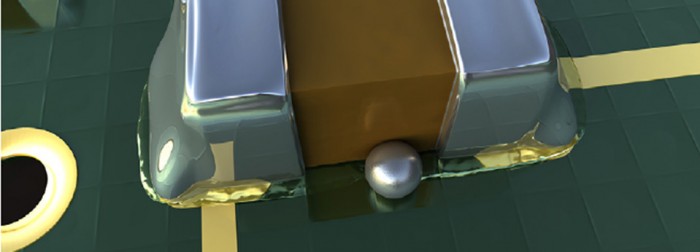Exploring the Wet Gold Technique to Measure Precious Metal Content
Phil Zarrow: Ron, in the past, we chatted about the interest in your blog postings on alloy density calculations. I saw in your blog that you used this technique that you've mastered to help a correspondent who wanted to understand the wet gold technique.
Dr. Ronald C. Lasky: Yeah, that was interesting, Phil. The person sent me a note, "My colleagues use a wet gold technique. Could you tell me how it works?" My first thought was, "What is the wet gold technique?”
Phil Zarrow: Yeah, my question too. What is the wet gold technique?
Dr. Ronald C. Lasky: I had to look it up, and I read a little bit, and I understood it. It's really pretty clever, it's one of these things, once you see it, it's kind of obvious but there are at least two groups of people I know that use it: One is prospectors for gold out in the wilderness, and people that buy scrap gold.
Let's consider the prospectors. One of the things, that the way nature is, gold is often with quartz and this is where the expression "the golden fleece" came from. Quartz looked white, like wool, and the gold is on top of it. There was actually, I think, people have found a great big piece of quartz that looks like white wool and it's got gold on top of it so that the concept of the golden fleece.
Anyway, a prospector is out in the field, and he comes upon some ore that's got a lot of quartz, but it's got gold in it also. He wants to determine how much gold there is, so he has an inexpensive scale that's in his little backpack and he sets it up, and he measures the weight of the ore and let's say it might be 200 grams. That gives him the mass, but he doesn't have the density because he needs the volume for that. He has a little beaker and he could put the gold on a string and just immerse it in the water and say this has water in it, this might be the beaker, and watch the water level rise. That's not very accurate.
Phil Zarrow: That's what I was going to ask you, it sounds like these old time tested techniques, but… Yeah.
Dr. Ronald C. Lasky: Yeah. What somebody developed that's really clever is you take the beaker with the water and put it on the scale then you zero the scale, and you take the ore and you immerse so it just all goes in the water, and that of course will cause the water level to rise. The amount of water that it displaces is what you read on the scale. Since we know the density of water is one gram per cubic centimeter, we can than easily calculate that the volume of the ore is whatever the weight was divided by one, and you can get the volume and then calculate the density. Then if you have some software tool like the Solder Alloy Density Calculator that we've talked about, you can use that. Now, initially, that gives you the result. I had to do a little cut and try to get the right concentrations, but after that, I also developed an additional new feature where you can actually put in the results and you'll get the weight fraction of gold. It can be really helpful for somebody in the field.
Now, what I find interesting is that they have formulas that they use, the prospectors. They get their measurements in the field and they plug it into this formula, and it tells them how much gold they have. I actually derived the formula and found that it's right to within about 5%. I thought that was pretty good.
Phil Zarrow: Ah, but what is 5% translate when we're talking about the price of gold?
Dr. Ronald C. Lasky: Yeah, well, and that's one concern I have for the other people that use this technique and actually the person that asked the question was in this category, where they have scrap metal so they're buying scrap gold, and they use the same technique, and they have a formula, and they plug into the formula. The formulas can only work if you have one other alloying element. If you have two, it doesn't work at all so if you have gold, say, silver and copper, it can't work. There's no way to determine that, but for jewelry metal, gold and copper is very common, like my wedding ring is gold and copper, and so it will work. I also used the formula that they use and I derived where it came from and found it's right to within about 20%, and the 20% would favor the scrap buyer.
Phil Zarrow: Oh, okay.
Dr. Ronald C. Lasky: That's probably how they get away from the fact that there might be a little of other alloying metals in the scrap they're buying.
Phil Zarrow: Mm-hmm, so that's intriguing. Seller beware.
Dr. Ronald C. Lasky:Right, right, right.
Phil Zarrow: Ron, this is a really fascinating topic, and, I must say, human drama.
Dr. Ronald C. Lasky:Right.
Phil Zarrow: I assume we can see the rest of the story on your blog?
Dr. Ronald C. Lasky: Yeah, sure. It's only blog at www.indium.com or if you have any questions about this or have more interest, send me an email at [email protected].
Phil Zarrow: Pleasure learning about this topic, Ron, thank you.
Dr. Ronald C. Lasky: Terrific. Yep.


